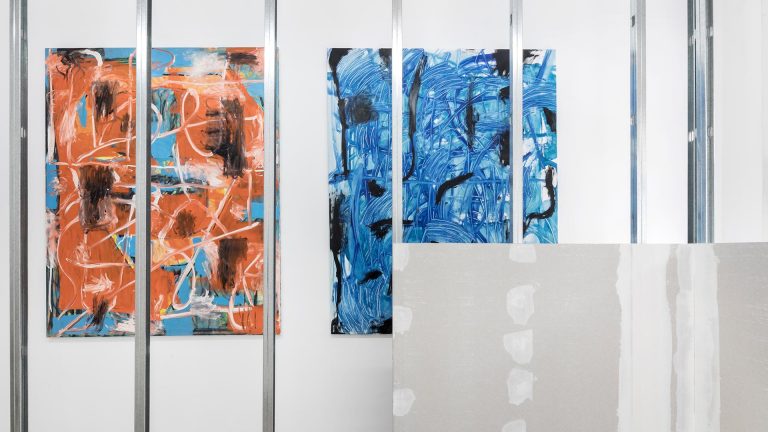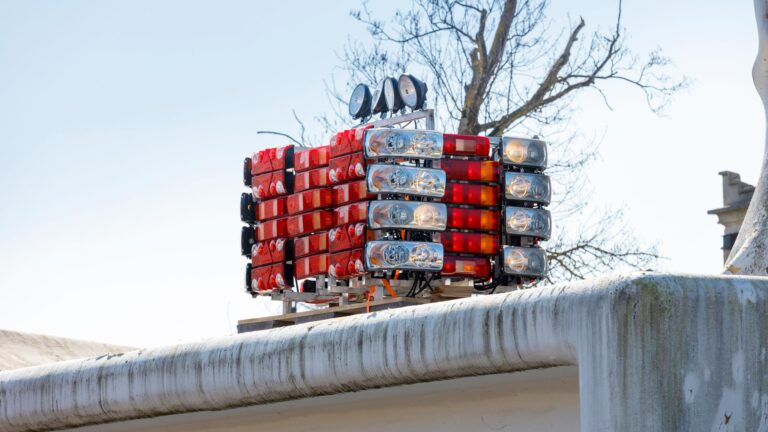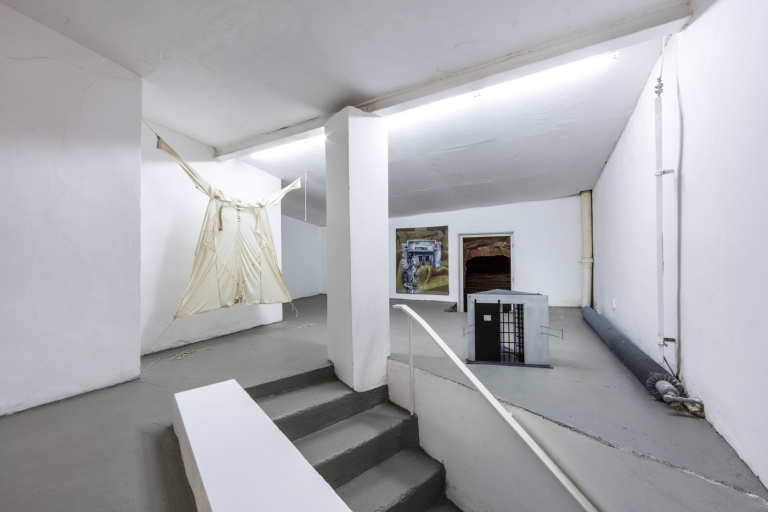Artist: Zuzanna Czebatul
Exhibition title: Even a spaceship has to land sometimes
Curated by: Michal Novotny
Venue: Futura, Prague, The Czech Republic
Date: October 2 – November 25, 2018
Photography: all images copyright and courtesy of the artist and Futura
It needed four people to carry the large flat powder concrete sculptures of Zuzanna Czebatul, that we exhibited with Linda and Daniela Dostálková at Plato Ostrava, as each of them weighted 120 kilos. I immediately thought it is sympathetically courageous to produce such a work in the era of absolute mobility. And even subversive as this kind of sculptures are still ascribed mainly to male artists. There is always something loud in Zuzanna’s work. The taste for artificial, eccentric and excessive. She isn’t scared to expose herself, not to hide behind the usual contemporary art arrogance of never to be too explicit and only giving the exact right amount. Her work of course builds on the pop, or one could even say porn. Those toxic artificial seduction mechanisms that simply click the right buttons inside and are too fast to keep on with how they’re operating. But she detours them, not with the classical irony, as irony stopped to work already long time ago. Same for appropriation. She rather dematerialise and over-materialise them in the same time, accentuating the surface but always with tension to the matter.
At FUTURA Zuzanna exhibits three large feet that are exact casts of Siegfried’s foot from Berlin’s Bismarck memorial taken with silicone moulds. The problematic gesture what comes to its ambivalent legality questions to whom public sculptures belong, but no only as part of the public space but literally as shapes that are given to be seen but not to be acquired for further use.
The guerrilla moulding affects the original only in one sense, that it removes the green patina caused by advanced oxidation. The new Siegfried’s legs had not been cast in bronze but in plaster, but are coated with a thin layer of metal that had been also patinated in three chemically different ways creating a different effect. This again adds to the tension between the surface and the essence, between the skin and the flesh.
The resin brick pieces spread over the walls of FUTURA plays on a certain 1990s aesthetics, the sort of Brooklyn brick graffiti style graphics used in popular culture as in Jump street 21 television series. The site specific reaction to the walls of FUTURA, that is a sort of imitation, could then also be read in the relation of counter culture and its commercialisation. The position of FUTURA and the quickly gentrifying neighbourhood. The words we read on the pieces: Block, Chaos, Skies, Lover, Prick and Rush adds to the teenage vibe, the problematic obligation to play a certain role, act according to a certain script, but also the romantic subversive energy of the “teenage” as state rather than age. The uncertainty of sincerity and staging in this work underlines a certain third reading. The inherent irony may allow for it meaning something serious. Perhaps this stubborn going for something that will be essentially read as ironical, even over ironical, is one of the last hope we have for being able to say something serious in a culture so much based on genre and parody.
The series of paintings is recomposition of 1982 illustration of Ryoko Ishioka and it was executed in Dafen, China, in order-based painting workshops. The feminine but not clearly gendered figure we see from behind, stands on a sky that mirrors her body, creating its exact image below. Her position on tip toes with hands crossed on her hips is both contemplative and alerted. The deep green body suit being somehow a second skin underlines her body features, but also seem to have functional protective and reinforcing function. We could read this image as visual commentary on the other works and the works of Zuzanna Czebatul in general. It somehow mirrors the exhibition visually, metaphorically but also literally in the presence of Skies, Skins and tiptoed feet.
-Michal Novotný

























